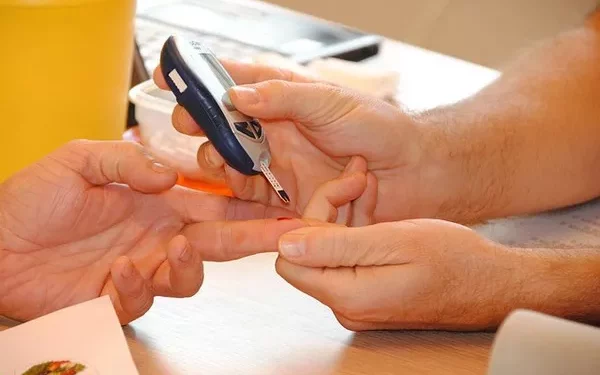Blood sugar, also known as blood glucose, is a critical measure of how the body processes and utilizes the energy derived from food. Maintaining optimal blood sugar levels is vital for overall health, as too much or too little can lead to various health complications. Among the many concerns related to blood sugar is the condition known as prediabetes, which refers to elevated blood sugar levels that are not yet high enough to be diagnosed as diabetes. Understanding what constitutes a borderline diabetic level is key to early intervention and effective management.
In this article, we will explore the concept of “borderline diabetes,” delve into the blood sugar ranges that indicate this condition, discuss how it is diagnosed, and outline the potential health risks of untreated prediabetes. Finally, we will look at lifestyle interventions that can help prevent the progression from prediabetes to type 2 diabetes.
Defining Blood Sugar Levels
To understand what qualifies as “borderline diabetes,” it’s important first to understand how blood sugar levels are measured and what the normal ranges are. The body regulates blood sugar levels to ensure cells receive a steady supply of glucose for energy. However, several factors such as diet, physical activity, and insulin function can influence blood sugar levels. The two most common tests used to measure blood sugar levels are the fasting blood sugar (FBS) test and the oral glucose tolerance test (OGTT).
Fasting Blood Sugar (FBS): This test measures blood sugar after an overnight fast (usually 8-12 hours without food or drink).
Oral Glucose Tolerance Test (OGTT): This test involves drinking a sugary liquid after fasting and measuring blood sugar at intervals over the next two hours.
These tests provide critical data that can be used to assess blood sugar status and diagnose conditions such as prediabetes or diabetes.
Blood Sugar Levels and Prediabetes
When it comes to blood sugar levels, there are well-established categories that help identify whether an individual has normal glucose metabolism, prediabetes, or full-blown diabetes. The following are the common blood sugar ranges used to diagnose these conditions:
Normal Blood Sugar:
Fasting blood sugar: 70-99 mg/dL (3.9-5.5 mmol/L)
OGTT (2 hours after drinking the sugary liquid): Less than 140 mg/dL (7.8 mmol/L)
Prediabetes (Borderline Diabetic):
Fasting blood sugar: 100-125 mg/dL (5.6-6.9 mmol/L)
OGTT (2 hours after drinking the sugary liquid): 140-199 mg/dL (7.8-11.0 mmol/L)
Diabetes:
Fasting blood sugar: 126 mg/dL (7.0 mmol/L) or higher
OGTT (2 hours after drinking the sugary liquid): 200 mg/dL (11.1 mmol/L) or higher
These ranges are established by medical organizations such as the American Diabetes Association (ADA), and they serve as a useful framework for determining whether a person is at risk of developing diabetes.
Understanding Borderline Diabetes
The term “borderline diabetic” refers to individuals who fall within the prediabetes category. Prediabetes occurs when blood sugar levels are elevated but not high enough to meet the criteria for a diagnosis of type 2 diabetes. For many people, prediabetes is a precursor to diabetes, but it doesn’t mean that everyone with borderline high blood sugar will go on to develop type 2 diabetes.
In fact, prediabetes is often a silent condition—meaning it typically does not present any noticeable symptoms. Many people with prediabetes are unaware that they are at higher risk for type 2 diabetes. This makes regular blood sugar screening crucial, especially for individuals who are at an increased risk of developing diabetes due to factors such as age, obesity, or a family history of the disease.
Risk Factors for Borderline Diabetes
While borderline diabetes is associated with elevated blood sugar levels, it is important to understand the underlying risk factors that contribute to the development of prediabetes. These factors can vary from person to person, but common risk factors include:
Age: The risk of developing prediabetes increases with age, particularly after the age of 45.
Overweight or obesity: Being overweight, especially with excess fat around the abdomen, increases the risk of developing insulin resistance, which leads to elevated blood sugar.
Physical inactivity: A sedentary lifestyle contributes to the development of insulin resistance, a condition in which the body’s cells do not respond properly to insulin, leading to higher blood sugar levels.
Family history of diabetes: A family history of diabetes increases the likelihood of developing prediabetes and type 2 diabetes.
Ethnicity: Certain ethnic groups, such as African American, Hispanic, Native American, and Asian American populations, have a higher risk of developing prediabetes.
High blood pressure: Hypertension can damage the body’s blood vessels, contributing to insulin resistance.
Abnormal cholesterol levels: High levels of triglycerides and low levels of high-density lipoprotein (HDL) cholesterol are associated with an increased risk of developing prediabetes.
Gestational diabetes: Women who had gestational diabetes during pregnancy are at a higher risk of developing prediabetes later in life.
How is Borderline Diabetes Diagnosed?
Diagnosing prediabetes involves assessing blood sugar levels through diagnostic tests. There are several tests that doctors may use to assess whether an individual has elevated blood sugar and is at risk for developing type 2 diabetes. These include:
Fasting blood sugar test: As mentioned earlier, this test measures blood sugar after an overnight fast. A result between 100 and 125 mg/dL indicates prediabetes.
Oral glucose tolerance test: This test is commonly used to diagnose prediabetes and diabetes. After fasting overnight, the individual drinks a sugary solution, and blood sugar is measured at intervals. A two-hour blood sugar level between 140 and 199 mg/dL suggests prediabetes.
Hemoglobin A1c (HbA1c): This test measures the average blood sugar level over the past two to three months. A level between 5.7% and 6.4% indicates prediabetes.
It’s important to note that a single test result may not provide a complete picture of an individual’s health. Doctors typically use a combination of tests and medical history to diagnose prediabetes.
Health Risks of Borderline Diabetes
While prediabetes may not seem as severe as type 2 diabetes, it still presents serious health risks. Elevated blood sugar levels can lead to long-term complications if left unaddressed. Some of the risks associated with prediabetes include:
Progression to type 2 diabetes: If blood sugar levels continue to rise, prediabetes can eventually develop into type 2 diabetes. Once this occurs, individuals are at risk for various complications, including heart disease, kidney failure, and nerve damage.
Heart disease and stroke: Elevated blood sugar levels contribute to the development of atherosclerosis (hardening of the arteries), increasing the risk of heart disease and stroke.
Kidney damage: Persistent high blood sugar can damage the kidneys over time, leading to chronic kidney disease and possibly kidney failure.
Vision problems: Uncontrolled blood sugar can lead to diabetic retinopathy, a condition that damages the blood vessels in the eyes and can result in blindness if left untreated.
Nerve damage: High blood sugar levels can damage the nerves, leading to peripheral neuropathy, which causes pain, tingling, and numbness in the hands and feet.
Preventing the Progression of Prediabetes
The good news is that prediabetes is reversible. With lifestyle changes, individuals can bring their blood sugar levels back to normal and prevent the progression to type 2 diabetes. Some effective strategies for managing prediabetes include:
Healthy Eating: Adopting a diet rich in whole grains, fruits, vegetables, lean proteins, and healthy fats can help manage blood sugar levels. It’s essential to reduce the intake of sugary foods and beverages, refined carbohydrates, and highly processed foods.
Regular Physical Activity: Engaging in at least 150 minutes of moderate-intensity aerobic exercise each week can improve insulin sensitivity and help lower blood sugar levels.
Weight Loss: Losing even a small amount of weight (5-10% of body weight) can significantly reduce the risk of developing type 2 diabetes and improve blood sugar control.
Monitoring Blood Sugar: Regular monitoring of blood sugar levels can help individuals with prediabetes track their progress and make necessary adjustments to their lifestyle.
Managing Stress: Chronic stress can affect blood sugar levels by increasing the production of stress hormones such as cortisol. Practicing relaxation techniques like yoga, meditation, and deep breathing can help manage stress.
Medications: In some cases, doctors may prescribe medications such as metformin to help lower blood sugar levels in individuals with prediabetes.
Conclusion
Borderline diabetes, or prediabetes, is a condition where blood sugar levels are elevated but not yet high enough to be classified as type 2 diabetes. It is a serious health concern because it puts individuals at a higher risk of developing diabetes and other related complications, such as heart disease, kidney damage, and nerve damage. However, with early detection and lifestyle changes, it is possible to reverse prediabetes and prevent the progression to diabetes. Regular screening, maintaining a healthy diet, staying physically active, and managing stress are key components of preventing and managing borderline diabetes.
Related topics:

























